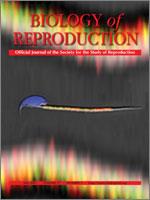The aim of the present study was to examine the effects of experimental cryptorchidism on rat testicular phospholipids and neutral lipids that contain long-chain (C18-C22) and very long-chain (VLC) (C24-C32) polyunsaturated fatty acids (PUFA). The weight of the cryptorchid testis was nearly half that of the contralateral control at postsurgical Days 7–10 owing to the depletion of germ cells. Concomitantly, the amounts of major glycerophospholipids (GPL) and sphingomyelin (SM) per testis decreased. Both these lipids lost their characteristic long-chain and very long-chain PUFA, notably 22:5n-6 and 28:4n-6, respectively, which suggests that these species are linked to the membranes of germ cells. In contrast, the amounts and concentrations of triglycerides (TG; triacylglycerols and 1-O-alkyl-2,3-diacylglycerols) and cholesterol esters (CE) increased several fold in the surviving cells (mainly Sertoli cells) in the cryptorchid testis. All these neutral lipids, but especially CE, accumulated large amounts of the major PUFA of the testis, 22:5n-6, as well as pentaenes with longer carbon chains (i.e., 24:5n-6 in TG and 28:5n-6 in CE). This accretion suggests that neutral lipids may store preformed PUFA coming from dying germ cell GPL and also VLCPUFA no longer needed as a source of PUFA destined to assemble new germ cell GPL. The lipid adjustments observed in cryptorchidism suggest a possible role for Sertoli cell CE in the turnover and conservation of PUFA within seminiferous tubules.
How to translate text using browser tools
11 April 2007
Changes in Lipids Containing Long- and Very Long-Chain Polyunsaturated Fatty Acids in Cryptorchid Rat Testes
Natalia E. Furland,
Eduardo N. Maldonado,
Pablo Ayuza Aresti,
Marta I. Aveldaño
ACCESS THE FULL ARTICLE
<
Previous Article
|

Biology of Reproduction
Vol. 77 • No. 1
July 2007
Vol. 77 • No. 1
July 2007
Sertoli cells
spermatid
spermatogenesis
stress
testis




